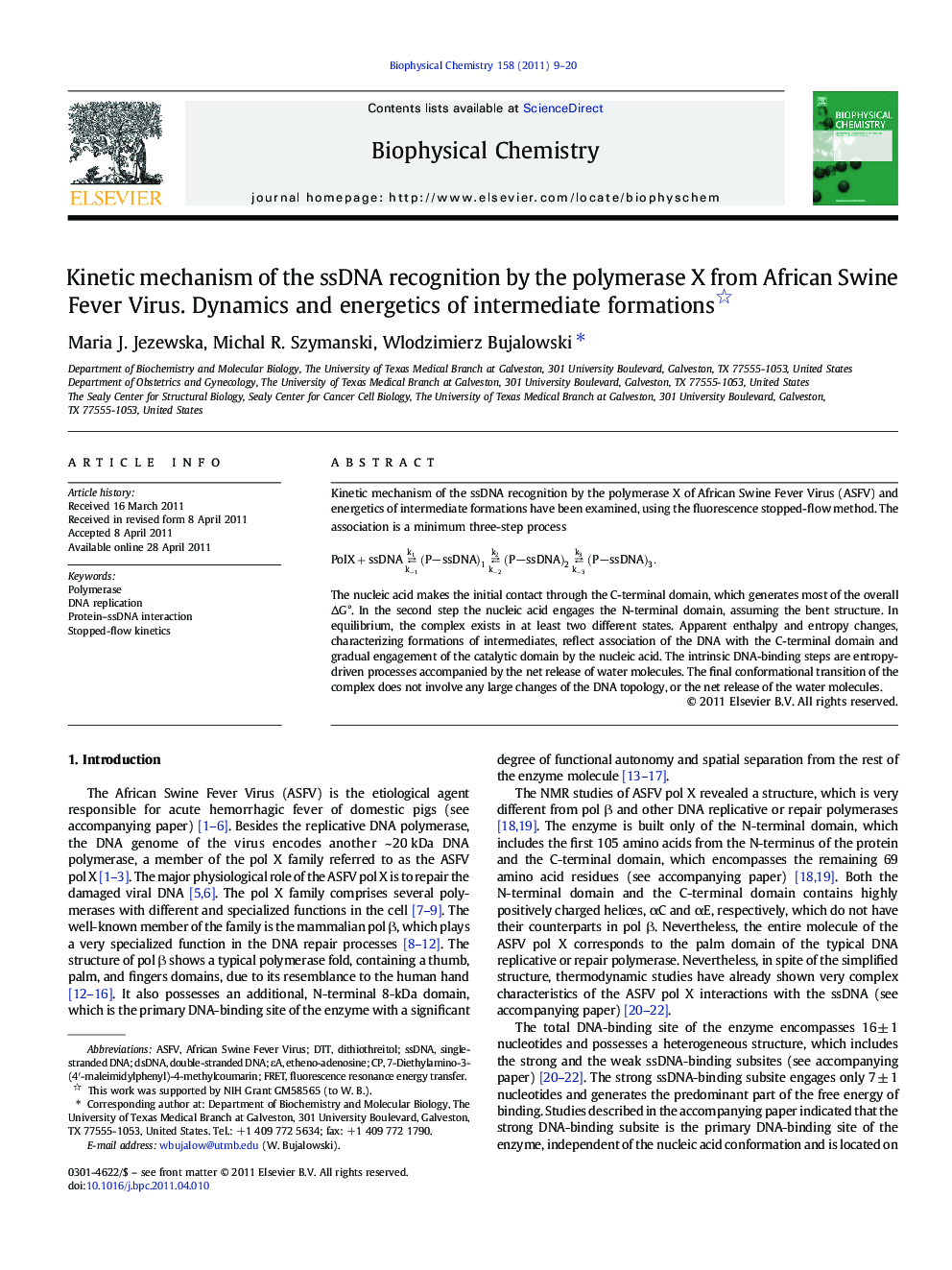| Article ID | Journal | Published Year | Pages | File Type |
|---|---|---|---|---|
| 5371323 | Biophysical Chemistry | 2011 | 12 Pages |
Kinetic mechanism of the ssDNA recognition by the polymerase X of African Swine Fever Virus (ASFV) and energetics of intermediate formations have been examined, using the fluorescence stopped-flow method. The association is a minimum three-step processPol X+ssDNAâkâ1k1PâssDNA1âkâ2k2PâssDNA2âkâ3k3PâssDNA3.The nucleic acid makes the initial contact through the C-terminal domain, which generates most of the overall ÎG°. In the second step the nucleic acid engages the N-terminal domain, assuming the bent structure. In equilibrium, the complex exists in at least two different states. Apparent enthalpy and entropy changes, characterizing formations of intermediates, reflect association of the DNA with the C-terminal domain and gradual engagement of the catalytic domain by the nucleic acid. The intrinsic DNA-binding steps are entropy-driven processes accompanied by the net release of water molecules. The final conformational transition of the complex does not involve any large changes of the DNA topology, or the net release of the water molecules.
Graphical abstractDownload full-size imageResearch HighlightsâºThe ASFV pol X-ssDNA association is three-step sequential mechanism. âºThe enzyme makes first contact with the DNA through its C-terminal domain. âºEngagement of the catalytic domain induces large topological changes of the DNA. âºIntrinsic binding steps are entropy-driven and accompanied by the release of similar numbers of water molecules. âºThe final transition does not affect the bound DNA structure.
